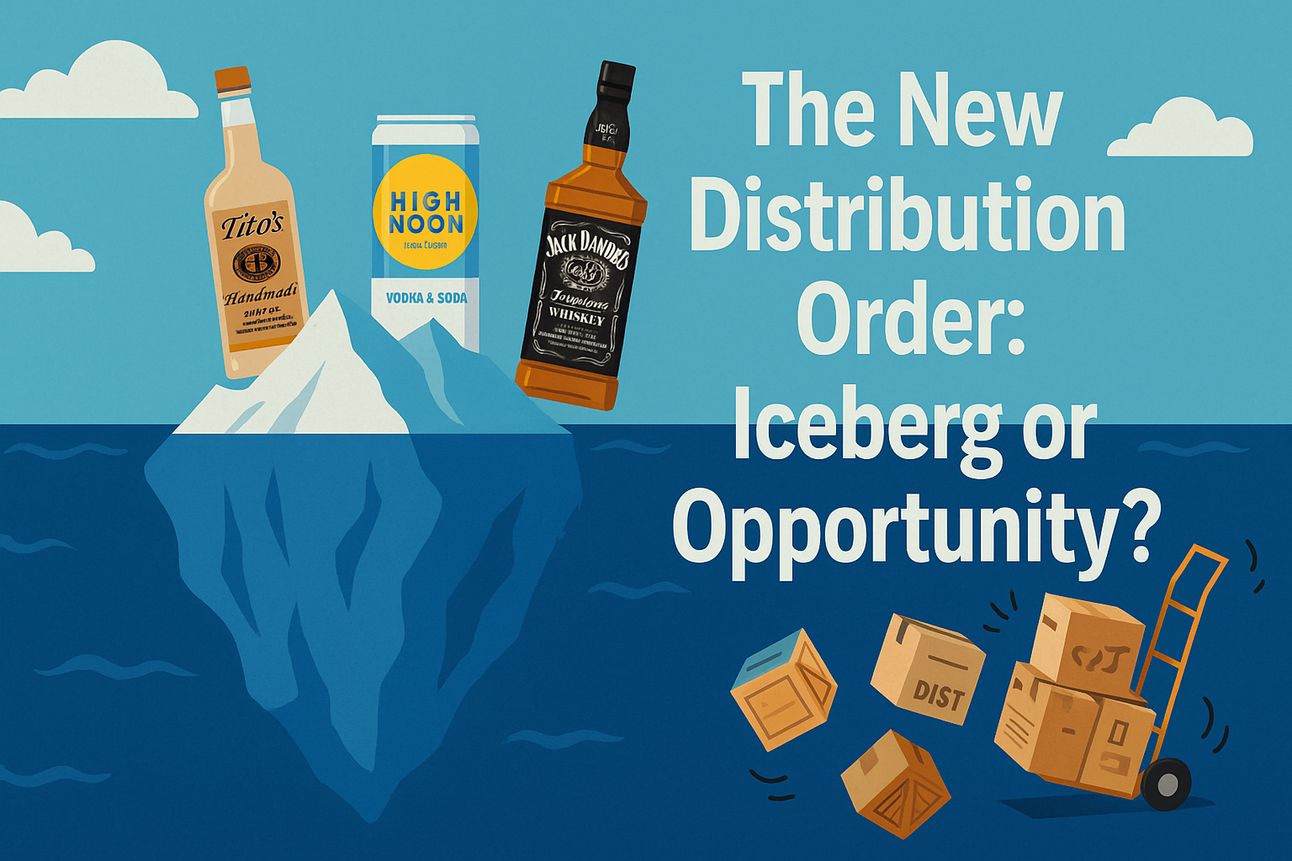- Consumer & Market Trends Newsletter
- Posts
- The New Distribution Order: Iceberg or Opportunity?
The New Distribution Order: Iceberg or Opportunity?
🚨 Major Moves Reshape Wine & Spirits Distribution

🚨 Major Moves Reshape Wine & Spirits Distribution
This week, the U.S. beverage industry is experiencing a seismic shift that could redefine how wine and spirits reach consumers for years to come. High-profile brands are making bold distribution changes:
Tito’s Vodka, the nation’s leading vodka, is moving its California distribution from RNDC to Reyes Beverage Group. This follows significant workforce reductions at RNDC and signals Tito’s intent to maximize efficiency and growth in its largest market.
High Noon, America’s best-selling spirits brand, is also joining Reyes in California. Parent company Gallo is leveraging Reyes’ robust beer distribution network to supercharge growth in the ready-to-drink (RTD) category.
Brown-Forman, the storied owner of Jack Daniel’s and Woodford Reserve, is overhauling its U.S. distribution network for the first time in over six decades. Starting August 1, 2025, Brown-Forman will partner with seven new distributor organizations across 13 states—including Reyes in California and Hawaii—aiming for sharper focus and greater investment in its brands.
❄️ The Tip of the Iceberg
These headline changes are just the beginning. The U.S. wine and spirits market has become highly concentrated, with three distributors now controlling over half of all sales. As beer distributors like Reyes rapidly expand into spirits and RTDs, the landscape is shifting toward fewer, larger players with unprecedented reach and influence.
Key Facts
Reyes Beverage Group is now the nation’s largest beer distributor and is quickly becoming a dominant force in spirits, handling everything from Tito’s and High Noon to Brown-Forman’s portfolio in California.
Market Concentration: Three distributors—Southern Glazer’s, RNDC, and Breakthru—account for more than 50% of all U.S. wine and spirits sales.
Sports & Events Impact: As these new distribution alignments take hold, sports sponsorships and event-driven sales are being disrupted, with large distributors prioritizing scale and efficiency over local or specialty connections.
💡 Opinion: Monoculture or Marketplace?
The current wave of distributor realignment,Tito’s and High Noon to Reyes, Brown-Forman’s 13-state overhaul represents only the visible tip of a much larger transformation. While these moves promise operational benefits and growth for the industry’s giants, they also present significant risks and challenges for the broader market.
Will Variety Survive?
On one hand, consolidation can streamline operations, improve logistics, and ensure consumers have consistent access to top brands. It can also help new product categories, like RTDs, scale rapidly through established networks. For sports venues, stadiums, and major events, this means more reliable supply and potentially bigger, flashier sponsorships.
On the other hand, as distributors focus on high-volume, high-margin brands, smaller producers may struggle to get shelf space or attention. The risk is a homogenized market where only the biggest brands thrive, squeezing out the diversity and regional character that make wine and spirits culture so vibrant.
My Take:
The challenge for the industry is to balance efficiency with diversity. If the new distribution order becomes a monoculture, consumers and innovative producers alike will lose out. But if distributors use their scale to champion variety and support emerging brands, this could be a new era of opportunity and creativity. The next few years will reveal whether consolidation is truly a rising tide for all or just the beginning of a new monoculture.
If you’re affected by these changes seeking new distribution or job opportunities—here are some resources to help you adapt:
For Job Seekers:
For Brands Seeking Distribution:
Research the portfolios and coverage of Reyes Beverage Group, Southern Glazer’s, RNDC, and Breakthru Beverage Group.
Attend industry networking events and tastings to meet distributor reps.
Use WineJobs.com to connect with distributors and importers.
Leverage LinkedIn to reach out directly to distributor portfolio managers and regional directors.
📚 Sources
Stay tuned for more insights as the industry evolves. Have thoughts or experiences to share? Reply to this newsletter or join the conversation online!